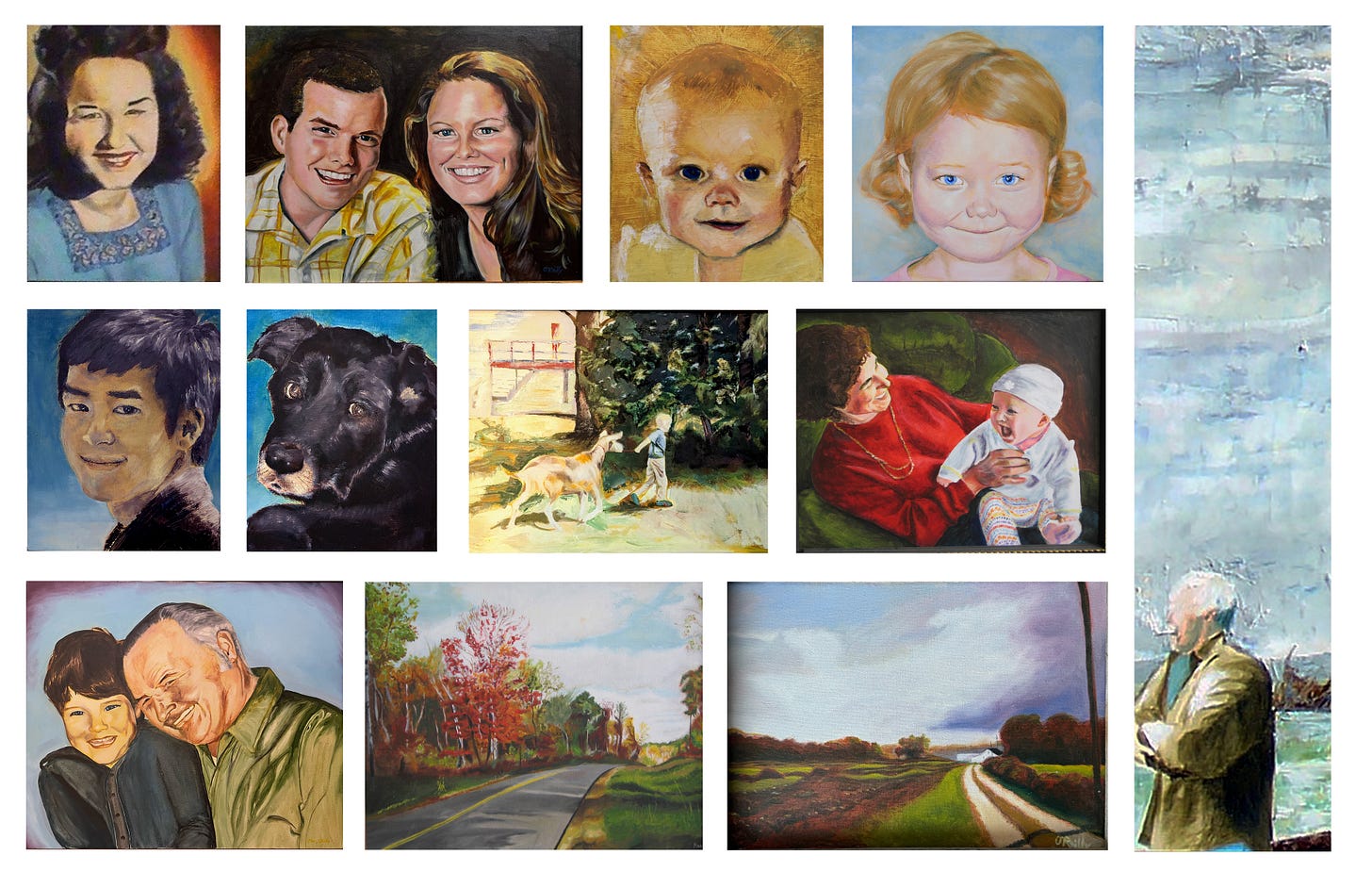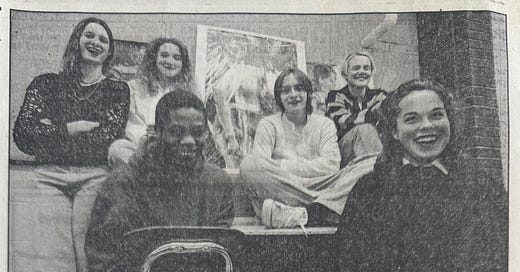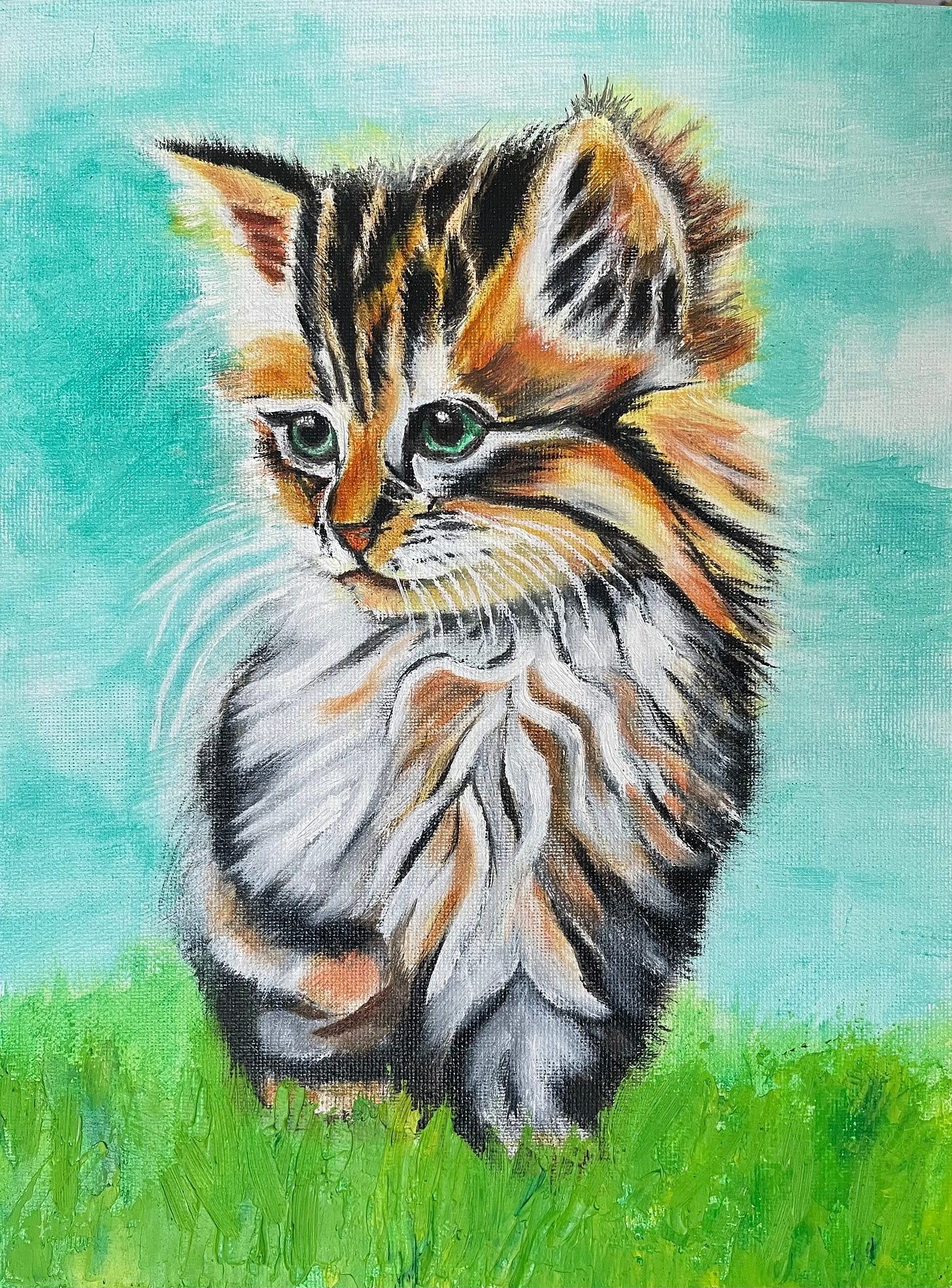Back in April, my best friend of over 30 years, Shelby, and I met for a quick getaway on Tybee Island, Georgia, just off the coast of Savannah. Among our many adventures was a stop at the Tybee Art Gallery, an artists’ co-op on Main Street. The artist tending the shop that day was a rangy man with white hair and kind eyes. He invited us to look around the cozy space, around 200 square feet, pointing out the corner where his paintings hung. I complimented him on the interesting perspective he chose for a palm tree silhouetted against a sunset. “Are you an artist?” he asked. I heard some sort of non-committal “eh” noise come out of my mouth. My friend, as friends do, quickly seized. “Yes she is! Show him your paintings!” she demanded.
Which is when I realized that I had no idea how to show him my paintings. I know this dates me, but most of my paintings were done before we all carried cameras around in our pockets. He wanted to see something, so I showed him my website of science illustrations. He made a face. I’d tried to warn him. (“eh.”) My friend’s phone was at her ear, calling home for someone to snap photos of the many paintings of mine adorning their walls, but no one was there. We chatted a while longer and on our way out of the gallery, he called after us, “Stay friends forever!” As if we had a choice.
As a teenager, I spent much of my free time painting in a small corner room of our unfinished basement, idiotically smoking cigarettes around open jars of turpentine (sorry, Mom) and listening to an eclectic assortment of cassette tapes on my boom box—from Simon and Garfunkel to Ice Cube, Jimmy Hendrix to the Sister Act soundtrack. I spent the bulk of my senior year in the art room at school once I’d completed my graduation requirements. (I took exactly one AP class, by accident—chemistry.) We had a legendary art teacher named Terry Jackson who made news that year when our school won four of the five best-in-show Scholastic Arts Hallmark awards for the entire state of Indiana—two of them alone by my friend Amy—and a bounty of others. With his signature humility, Mr. Jackson was quoted as saying, “It’s never happened before and I don’t think it’ll happen again, but it’s nice it happened once.”
I don’t have pictures to share of the paintings I did that won that year. The Hallmark winner was a portrait of a classmate that was given to his Mom many years ago. Another was traded with Mr. Jackson at his request, his now hanging in my own Mom’s living room. The natural attrition of three cross-country moves likely befell the rest.
I kept up painting through college, graduate school, and postdoc. Once I had kids, I traded in my oil paints and canvases for crayons and sidewalk chalk, then cardboard puppet stages, then Endeavor space shuttles as Halloween costumes. By the time I looked up and realized I’d stopped painting, the world had moved on. Adobe Photoshop could turn a photograph into a virtual oil painting with a single click. Then came AI. What was the point? Besides, I’d managed to make my hobby my career, keeping up with the times, pixels my medium.
So then, am I an artist? This is still a complicated question.1 At some point, I realized that I didn’t have anything particularly profound to say about the world or what it means to be human. I realized I was more interested in humanity on a molecular level, especially when things go wrong, so we can discover ways to fix it. I realized I could more easily comprehend the results sections of the most obscure chemistry journal than an artist’s statement in a gallery. I tried on the moniker of “illustrator” for size, and that felt right. I like using my skills to try to explain complicated things. Besides, I thought, looking back at my oil paintings, they weren’t really that good.
Then one day, a few months ago, our 10-year-old asked me if I could teach him how to paint. He found an image of a cute kitten online (which turned out to be a painting itself2 ), and I gathered two canvases. Distracted shortly into the lesson by the Nerf basketball hoop in the same room, he asked if I would please just finish mine for him. And this was how I made my first oil painting in 13 years.
He wanted to display it in his 5th-grade classroom, which was unsurprising since he takes almost all of his drawings—the ones he doesn’t give to us—to school as gifts for his friends and teachers. It suddenly dawned on me that nearly every painting I did outside of my high school art room was for someone too, a close friend or family member. I’d barely let the paint dry before eagerly pressing them into someone’s hands. Most were portraits. My mother with her first grandchild on her knee. My best friend and her husband as a wedding gift, and then their baby years later. My maternal grandmother at age 18, painted for my grandfather who had lost her a few years before to Parkinson’s. This same grandfather, a man of few words, later told me that he talked to the painting every day, assuring me that it hadn’t started responding yet.

We weren’t an emotive family. Humor was our love language. But my son’s artistic generosity awakened me to a second language, quietly passed down through at least four generations. My paternal grandfather, a former police officer and World War II vet with half a finger missing from a carpentry accident, cross-stitched a large-scale version of my senior picture portrait for me. He painted ceramic leprechauns to place in his trees and to give away to friends and family. My Dad was fluent in this language too, I realized. He enjoyed spending days in his woodworking workshop making pieces for other people, mostly my Mom. This revelation helped me see that whether my paintings were any good or not was completely beside the point. It was how we said I love you. You can’t curate love. And AI can’t replace that.
My Dad died two weeks after Father’s Day in 2017. When I bought him a card, I knew it would be the last. I had no words to express what was in my heart, so I covered the card with little drawings from our life. Him at my softball games, fingers in the chain link outfield fence, where he wouldn’t have to suffer small talk with other parents. Him laying a blanket over me when I’d fallen asleep on the couch, and many more. He loved the card.
Is there anything you used to enjoy but stopped doing because it seemed pointless? Could it have been a way to say I love you, even if only to yourself?
I know many of you may be asking this of yourselves too, and I want you to know that I will always jump in to say, “Yes you are!” Because everyone needs a friend like that.
A recent post called Homage or Heist? addressed when it’s okay to copy other artists. This is a clear case of copying the masters to improve one’s skills. See link in main text for attribution, and we will not profit from this work beyond the gratifying “awwws” of fifth-grade pupils.






Another beautiful, poignant post. thank you.
This post made me both laugh and cry. I continue to be amazed by your many talents!!
And yes, you definitely ARE an artist!